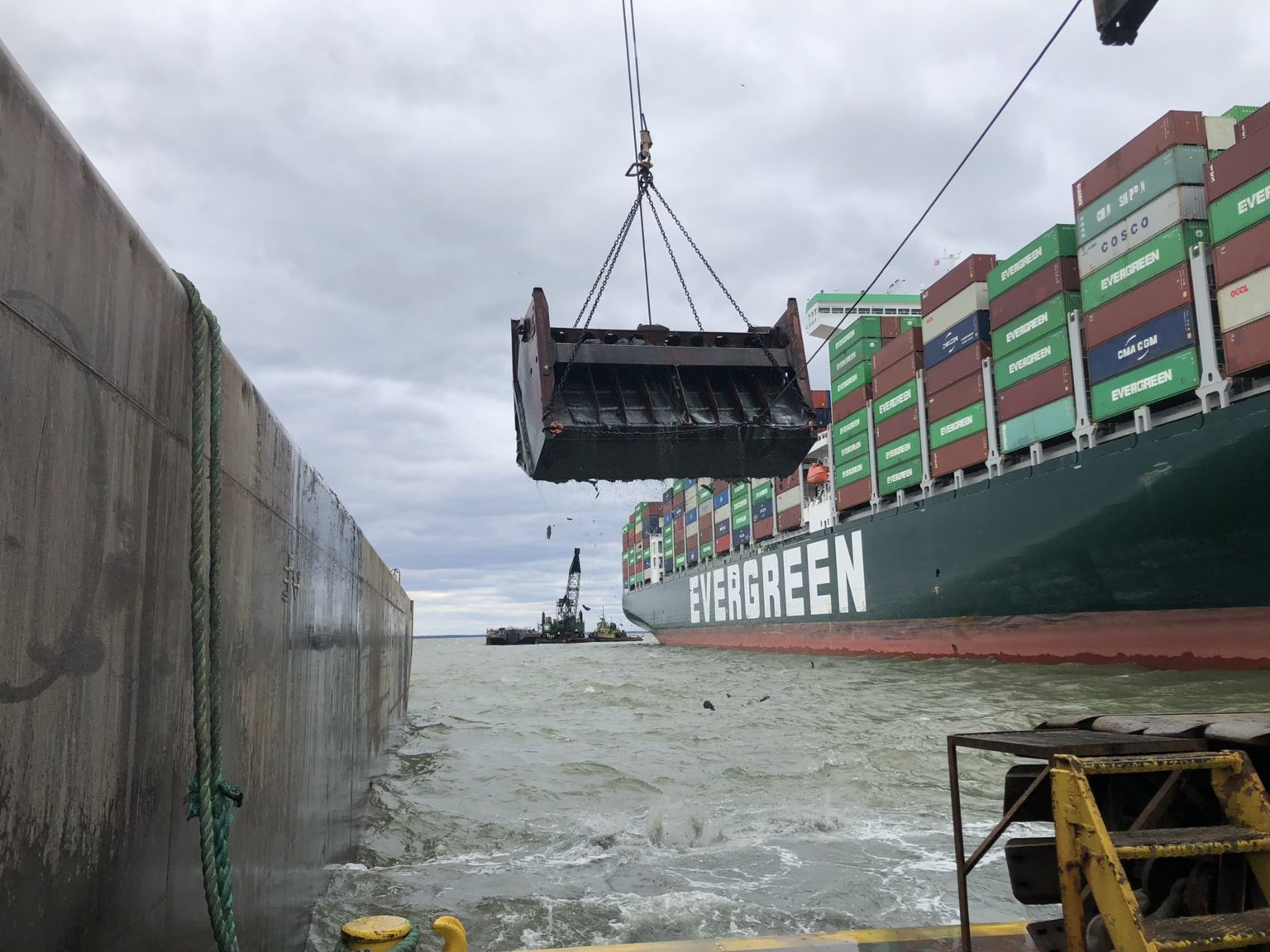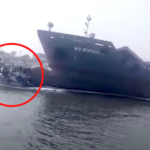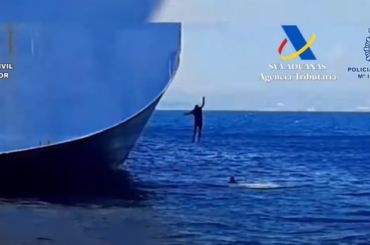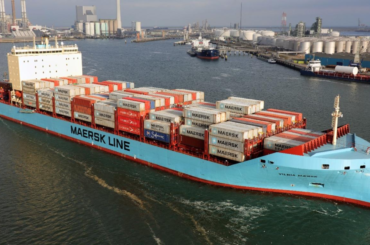Dredging around the stuck Ever Forward began over the weekend, with two dredges clearing mud from around the ship’s hull.
Dredging began on Sunday, according to Port of Baltimore Executive Director William Doyle, with Donjon-Smit, the appointed salvor, and Cashman Dredging & Marine Construction leading the way.
On the scene with Ever Forward, AIS displays two dredges, Donjon’s Oyster Bay and Cashman’s Dale Pyatt. Dale Pyatt is the largest “clam shell dredge” in the Western Hemisphere, with a 28 cubic yard bucket, according to Doyle. The Oyster Bay from Donjon Marine Co. is equipped with a 15-cubic-yard clam shell bucket. The dredging is part of a salvage plan that the US Coast Guard has officially approved.
“The team is mobilizing all available local tugboats to join in the refloating operation,” Evergreen said in a March 18 update. “After sufficient mud is excavated the refloating operation will begin using both the tugboats and the power of her main engine. The rescue team will carry out the plan utilizing the most beneficial high tide period in the port area.”
No timeline has been provided for the refloating.
The 334-meter-long Ever Forward grounded on March 13 after straying from the Craigshill Channel on its way to Norfolk, Virginia, from the Port of Baltimore. The ship is still aground off Gibson Island, between buoys 16 and 14. The Port of Baltimore continues to operate smoothly, with no disruptions to ship traffic.
Related article: Ever Forward Deep in Mud, Long Salvage Operation Expected
After the recent full moon, the next full moon will occur on April 16 and will bring the best high tide conditions. However, because the tidal range in the northern section of Chesapeake Bay is just about a foot at most, waiting until the full moon may not make much of a difference—it only adds about an inch of water.
The crew of the Ever Forward is still on board, doing soundings to check for pollution. So far, no pollution has been recorded, and the ship is in good condition.






